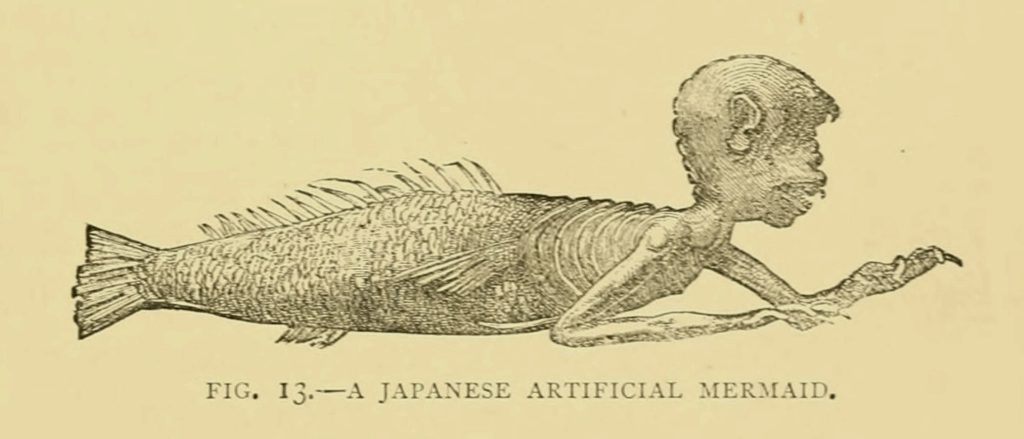Mermaids are part of countless mythological traditions found the world over. Almost ever culture has a belief in some form of human-fish hybrid. In the west the modern mermaid evolved as combination of the sirens in Homer’s Odyssey and water spirits described by Pliny the Elder. In medieval times they became symbols of sin: temptresses leading lustful men astray. In 16th century, just as belief in other mythological creatures started to fade, mermaids were suddenly taken seriously as real exotic animals. As European ships started stared exploring more distant waters, tales of mermaid encounters became increasingly common. By the 1700’s the scientific community was taking the question of mermaid reality quite seriously. What is it about mermaids that made them seem so real? Tune-in and find out how stolen scales, Starbucks’ secretly perverse logo, and a fish-woman from Newfoundland all play role in the story.

The Mesopotamian deity Oannes

Typical double tailed Mermaid. Taken from the Pontifical of Guillaume Durand created in Avignon, France, in circa 1357

Gautier’s Mermaid Illsutation from 1758. The being was allegedly displayed alive in Paris

Richard Whitbourne’s Mermaid in St. John’s, Newfoundland, 1610

19th century sketch of a piece of taxidermy much like Barnum’s “Feejee Mermaid”

